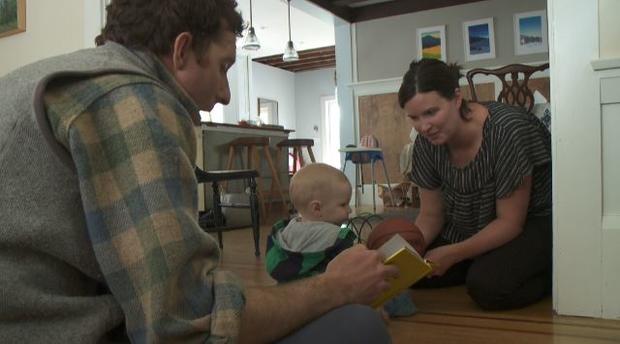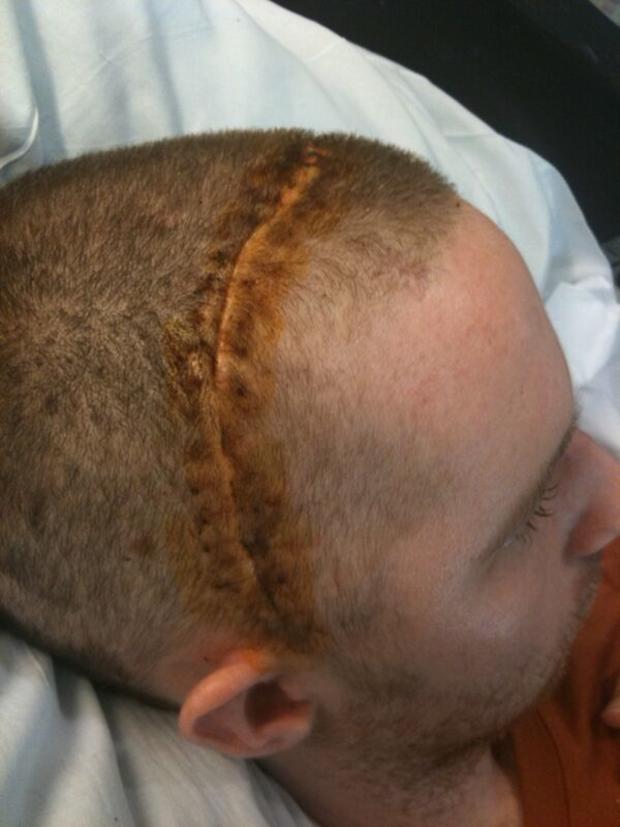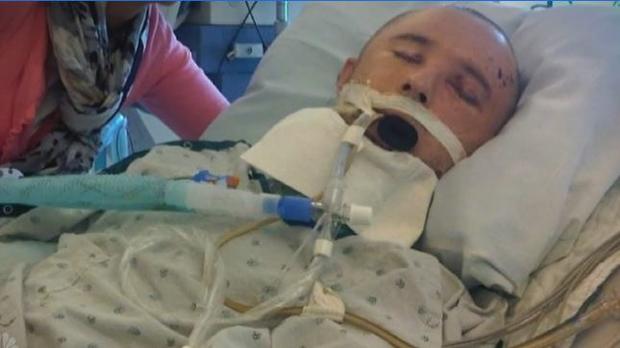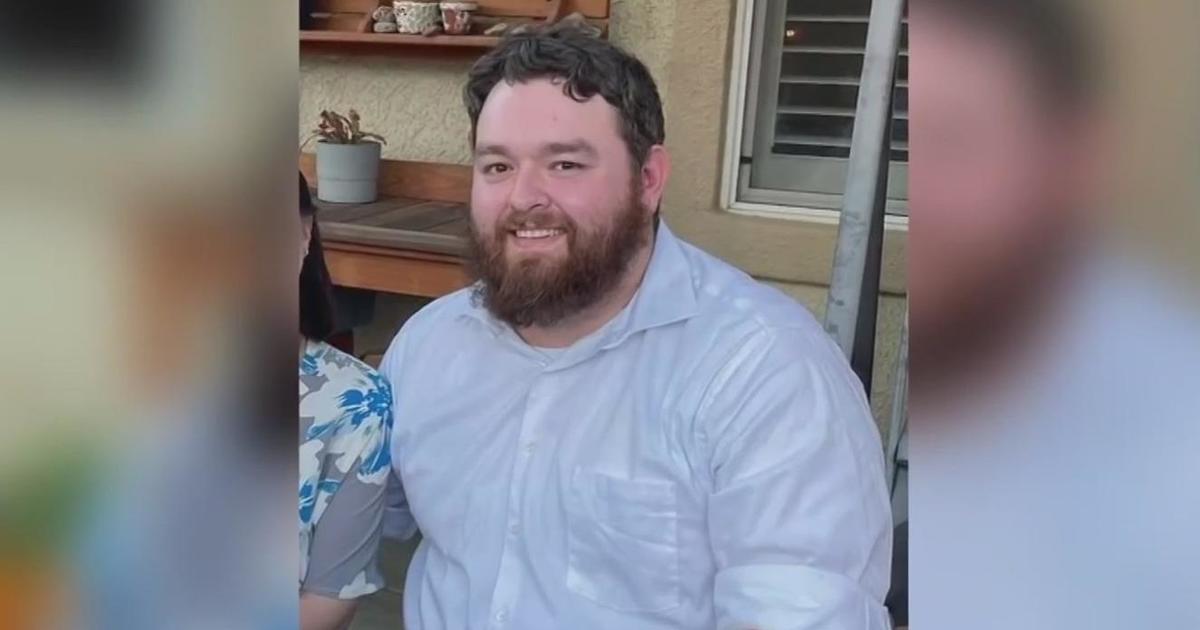Marin County Dipsea Race To Include Survivor Of Traumatic Brain Injury
(KPIX 5) – The 7.5 mile Dipsea race course snakes through the Marin Headlands and ends at Stinson Beach. The short but steep course begins in Mill Valley with a flight of wooden stairs – it's a fitting start for one local athlete who will take another step in his recovery process by running the Dipsea on Sunday.
The 107-year-old race is one of Marin County's most cherished traditions. The time-handicapped event receives thousands of letters every year from athletes begging race organizers to let them participate. The Dipsea committee calls the letters "sob stories," but they've never read one quite like Patrick Mahoney's.
Mahoney is a 31-year-old Bay Area transplant, born in New Jersey and educated on the east coast. He now lives in Oakland with his wife Anne Nelson and their young son Oliver – a child they consider a miracle given the circumstances.
"It's nice to have a moment in life that's amazing, completely unrelated to the accident," he said of fatherhood.
The accident happened over six years ago when Mahoney was in graduate school at University of New Hampshire. After a night of socializing in October 2010, he found himself 15 miles away from his home in Rye, New Hampshire. Instead of taking the bus, Mahoney decided to ride his bike back.
He didn't expect to break a sweat on the short commute considering months prior he wheeled 3,000 miles across the United States. Mahoney was also in fabulous shape from his track days at Tufts University where he ran the 400 meter and half-mile events.
"He made me fall in love with biking," said Nelson who wasn't with her then-boyfriend the night of his fateful accident.
"A little over halfway through that ride I was hit by a car and thrown 45 or 50 feet forward, then landed on the side of the road," Mahoney recalled from the stories of others. Years later he sent a letter to the driver of the car, but never got a response.
He was wearing a helmet, but the force of the blow to the front of his head caused massive brain trauma and later a medivac trip to the ICU at Massachusetts General Hospital.
Surgeons in Boston performed a craniectomy because Mahoney's brain was swelling at a rapid pace.
"The front portion of my skull was removed and placed in a freezer," he said. "The skull needed to come off to allow that swelling to happen."
Despite the expert care, Mahoney's chance of survival was grim. Nelson was preparing to say goodbye.
"We for sure thought Patrick was going to pass away," she said. "I remember going to his apartment to look for pictures of him that I wanted hold on to."
Mahoney was in a coma for two weeks, and it likely felt like two years for his family. Doctors began wonder if it was time to take Mahoney off life support.
"Based on their data, they said to give it another couple days to make the decision," said Nelson of the exruciating predicament. "They need to turn over beds and that's the reality of it. He could have stayed in a coma for a long time."
Despite the hospital's data, Mahoney stayed on the machines. Loved ones were encouraged by his flush cheeks, and the fact that the rest of his body was 100 percent healthy.
Their faith was almost immediately rewarded. Two days after the Mahoney's were faced with that awful decision, he showed signs of life.
"He would give a thumbs up and he would wink," something that still brings a smile to Nelson's face.
Mahoney's health would improve exponentially thanks to years of therapy to learn everything over again. He was paralyzed on his left side and suffered seizures, but he was alive.
"I'm lucky they gave me a chance," Mahoney said, justifiably hesitant to think about the alternative.
You can tell he's been through turmoil by listening to the cadence of his speech or catching his wandering gaze. He complains of short-term memory loss and sometimes rambles in conversation.
Today he works in San Francisco as a residential counselor at Progress Foundation, a program for the city's mentally ill. It's a career path that hits relatively close to home.
"Brain injury and a mental health diagnosis are different, but they overlap in a lot of ways," he said. "A big part of empathizing with someone is to know what they've gone through."
Anne sometimes wonders what her life might have been like without the accident. She dropped out of law school in order to help Patrick with rehabilitation and learned to love the changes in their relationship.
"People ask me if he's the same person," acceptive of the reality that her husband isn't the same. What didn't change was his passion for writing. Mahoney has a degree in writing and published a book of poetry after the accident.
Lately, Anne has seen much more of the old Patrick. He's back to running, even if he's not as fast as he used to be.
"I did some reps on the track and I was thinking my 400 meter time was pretty fast," he said in slight amazement. "But I was looking online, and it said the track was 370 meters."
Close enough.
Competing against himself isn't nearly as fun anymore. Running the Dipsea race is a completely different challenge with added difficulties in terrain, elevation – and oh yeah, 1,500 other people.
The idea to run the Dipsea came from as family friend, and Mahoney's been training for the day ever since. But his expectations are relatively low – at least for his standards.
"I'd be satisfied with a complete race where I'm safe but exhausted at the finish," he said.
In Mahoney's life, finishing the race only represents the bottom of the Dipsea steps – the top isn't far away.
"This will help him feel like a whole person again," said Nelson.







